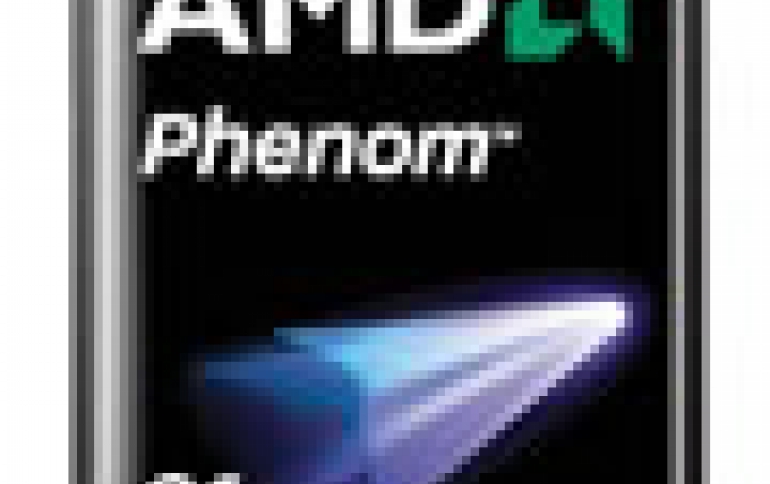
AMD to Sell Triple-Core Desktop Processors
Microprocessor maker AMD, coming off the heels of its biggest chip
launch in years last week, said on Monday it will sell a processor
with with three cores at the beginning of 2008.
The move by AMD, which until the middle of last year had a leg up on
its far larger rival Intel, could help it garner a bigger portion of
the overall desktop personal computer market, the Sunnyvale,
California, company said.
With the new AMD Phenom triple-core chip, AMD hopes to speed the adoption of multi-core chips, since sales of PCs with quad-core chips have been lackluster. Like the quad-cores, the Triple-Core Phenom will support DDR2 memory, a shared 2 MB of L3 cache and 512 KB of L2 cache per core. The cores will also support Socket AM2+.
By regulating the speed at which each core operates, AMD could conceivably sell a triple-core chip that has higher performance metrics than one of its own quad-core chips. The multi-core design of the upcoming AMD Phenom processor family of products, based on Direct Connect Architecture, features an integrated memory controller, accelerating performance for productivity, content creation, entertainment, and gaming. In addition, this next-generation architecture includes AMD's Balanced Smart Cache for rapid access to memory, with a shared L3 cache for higher performance on multi-threaded software. In addition, Cool'n'Quiet 2.0 technology enables independent frequency adjustments to each processor core, and the HyperTransport bus and memory controller for a cooler and quieter PC.
In a new video, AMD's Director of Product and Brand Management, Leslie Sobon, said that the new Phenom triple-core chip will offer an alternative powerful CPU solution for end-users and OEMs/ODMs, priced significantly lower than the company's native quad-core CPUs.
Both AMD and Intel sell single, dual- and quad-core chips to consumers in the desktop market, with different amounts of memory and varying performance metrics.
AMD last week launched its quad-core Opteron chip, which had been code-named Barcelona and was about six months late to market. Barcelona boasts faster performance, is more energy efficient, and makes it easier to run multiple kinds of operating system software at the same time, a feature known as virtualization.
With the new AMD Phenom triple-core chip, AMD hopes to speed the adoption of multi-core chips, since sales of PCs with quad-core chips have been lackluster. Like the quad-cores, the Triple-Core Phenom will support DDR2 memory, a shared 2 MB of L3 cache and 512 KB of L2 cache per core. The cores will also support Socket AM2+.
By regulating the speed at which each core operates, AMD could conceivably sell a triple-core chip that has higher performance metrics than one of its own quad-core chips. The multi-core design of the upcoming AMD Phenom processor family of products, based on Direct Connect Architecture, features an integrated memory controller, accelerating performance for productivity, content creation, entertainment, and gaming. In addition, this next-generation architecture includes AMD's Balanced Smart Cache for rapid access to memory, with a shared L3 cache for higher performance on multi-threaded software. In addition, Cool'n'Quiet 2.0 technology enables independent frequency adjustments to each processor core, and the HyperTransport bus and memory controller for a cooler and quieter PC.
In a new video, AMD's Director of Product and Brand Management, Leslie Sobon, said that the new Phenom triple-core chip will offer an alternative powerful CPU solution for end-users and OEMs/ODMs, priced significantly lower than the company's native quad-core CPUs.
Both AMD and Intel sell single, dual- and quad-core chips to consumers in the desktop market, with different amounts of memory and varying performance metrics.
AMD last week launched its quad-core Opteron chip, which had been code-named Barcelona and was about six months late to market. Barcelona boasts faster performance, is more energy efficient, and makes it easier to run multiple kinds of operating system software at the same time, a feature known as virtualization.





















